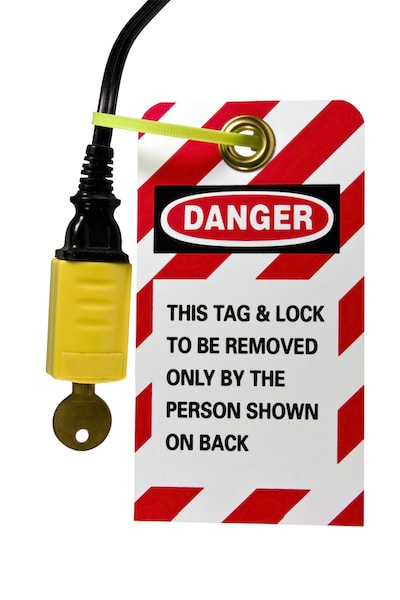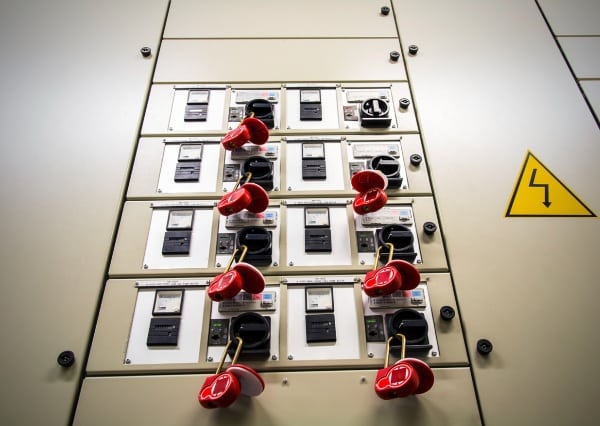Lockout Tagout – [Authorized vs Affected Employees]

Energy control procedures like lockout tagout are essential in any workplace that uses energized equipment. As mandated under OSHA regulation, performing lockout or tagout requires rigorous training and can only be undertaken by an authorized employee. You might have also heard about “affected” employees as well. But do you ever wonder what the difference is between an authorized and an affected employee? We’ll answer that here.
The employer is responsible for ensuring authorized employees receive the training they need to perform proper LOTO procedures. Additionally, all other employees on the job site must know how far away to stand from any machine being serviced.
Occupational safety depends on every employee on the job site thoroughly understanding their role. Employees need to know which category they fall into, authorized or affected.
Here’s an overview of the differences between authorized and affected employees, including each employee type’s job assignments, responsibilities, and training requirements. We have a full-length and video-based LOTO Training course that you can also check out.
Here’s a quick comparison of authorized employees vs. affected employees.
What Is the Definition of an Authorized Employee?
Authorized Employees
An authorized employee’s duties differ significantly from those of an affected employee. They have more responsibility and receive more specific training on lockout tagout and other energy control procedures.
An authorized employee is trained to perform lockout or tagout procedures on a particular machine before performing service or maintenance.
Only an authorized employee with the requisite training can perform servicing or maintenance on a machine or equipment that relies on electricity to function. No other employees are cleared to service equipment or be involved in lockout tagout.

What is the Definition of an Affected Employee?
Affected Employees
At a job site with lockout procedures in place, all other employees who aren’t authorized to lockout or tagout equipment are considered affected employees.
An affected employee is a person who works with machines or equipment for which lockout tagout procedures must be followed before maintenance activities can take place.
Affected employees can also be workers who don’t directly operate energized equipment but work in an area where lockout tagout and equipment servicing occur.
What Are the Responsibilities of Authorized Employees?
Being designated as an authorized employee involves increased responsibility as well as a more rigorous training program.
Let’s run through an authorized employee’s duties regarding lockout tagout and other procedures involving energized equipment in the workplace.
1. Perform Servicing or Maintenance on Machines or Equipment
Authorized employees are generally responsible for performing maintenance or service on machines at the job site.
Employees must be trained on the machines they will be servicing as part of their regular duties. Any time a new machine is introduced, the workers responsible for maintaining it must receive additional training on its lockout procedures, energy source, and the proper tools to use and personal protective equipment to wear while servicing it.
2. Identify Hazardous Energy Sources
Authorized employees must have a thorough grasp on all of the applicable hazardous energy sources for the machine or equipment they need to service. They must also be able to recognize when each source presents a hazard to the job site.
These sources may include the following:
- Electrical
- Mechanical
- Pneumatic
- Hydraulic
- Chemical
- Thermal
Each source has its own unique potential to cause hazards on a job site. For instance, electrical energy can cause arc flash, and chemical energy can cause burns or suffocation, depending on the type of chemical used.

3. Recognize the Type and Magnitude of Each Energy Source
In addition to identifying the various sources of energy on the job site, authorized employees must know the magnitude of each source – the amount of energy that source can release.
The greater the energy’s magnitude, the greater the potential risks and hazards are in the event of a breakdown in control procedures.
Knowing the expected energy output of each source informs authorized employees of the source’s risk level. Sources with a greater magnitude of available energy may have more rigorous safety protocols in place.
4. Have a Thorough Knowledge of Energy Control Procedures
Each authorized employee must completely understand the workplace’s energy control procedure, including the lockout tagout method used to control hazardous energy before equipment service.
Employees must also know how to communicate with coworkers about potential hazards, such as alerting affected employees before commencing any servicing or maintenance activities and before removing locks or tags from the equipment.

What Are the Responsibilities of Affected Employees?
An affected employee’s duties are simpler – though no less important – than those of an authorized employee.
Affected employees must pay attention any time an authorized employee announces that lockout tagout is about to be performed. They need to know where to stand and how far back to stay while any setup, adjustments, or repairs are being performed.
All affected employees must also be aware of the LOTO procedures involved in servicing each machine or piece of equipment at the job site, even if they aren’t authorized to perform such servicing themselves.
When Is Lockout Tagout (LOTO) Performed?
OSHA defines lockout tagout as an energy control procedure that must be implemented before energized machines and equipment can be serviced. Machines are isolated from their energy sources using locks and tags.
An authorized employee must perform lockout procedures before they can perform servicing or maintenance on any machine or equipment that has the potential to become energized.
Maintenance covered by lockout procedures includes any service involving an energized piece of equipment connected to an energy source or stored energy.
Lockout Tagout Procedure
- Before servicing a machine or equipment, the authorized employee must place LOTO devices on the machine to control the stored energy.
- Once the service is complete, the employee must inspect the equipment to verify that it is operationally intact.
- The authorized employee must then check to ensure other employees are far enough away from the equipment to avoid any hazardous energy before releasing the machine from LOTO.
- The employee should inform their coworkers that the machine is coming out of lockout tagout and that the devices have been removed.
Is Lockout Tagout Ever Unnecessary?
In two circumstances, lockout tagout may not be necessary as an energy control procedure.
- Servicing corded equipment. Authorized employees may not need to perform lockout procedures if the machine or equipment they need to service can simply be unplugged.
- Minor maintenance. An authorized employee may skip lockout tagout during minor servicing or maintenance procedures, including small adjustments, minor tool changes, and routine tasks.
Locks must be applied if any part of the authorized employee’s body is placed in the equipment’s danger zone or if the employee needs to bypass a machine’s guard or another safety device in order to perform maintenance.
Group Lockout Protocol
Situations in which a particular machine requires more than one worker to service it call for a group lockout procedure. All authorized employees involved in the lockout must place their tags or locked on the group lockout device before beginning to work on the equipment.
When the work is complete, any affected employees in the area must be alerted before anyone removes their lock or tag.

Employee Training Requirements
Per OSHA regulation, the employer must provide regular training sessions for all employees in a workplace that uses energized equipment. Workers must be trained whether or not they directly interact with said machines, although the training requirements are different for both groups.
Training sessions should cover the following areas:
- The full energy control program designated by the employer
- The aspects of the energy control procedures in place relevant to each respective employee’s role
- The program’s restrictions and prohibitions relevant to each employee
- OSHA’s requirements and minimum standard for safety
As long as all workers understand their respective roles, there is no reason why training should be held separately. All workers may attend the same lockout safety training sessions.
When Should Employees Be Re-Trained?
The employer should regularly verify that all employees understand their roles and all relevant procedures in the workplace.
- Employees will need to be retrained or receive additional training in the following scenarios:
- Any time any new machine or equipment is introduced to the workplace
- Whenever a new hazard is identified
- Any time an employee’s responsibilities change
- If an employee breaks procedure or is shown not to understand the energy control program
Quick Recap of Lockout Tagout Roles and Responsibilities
Let’s briefly review the job assignments and training requirements for authorized and affected employees.
Which of the following describes an authorized employee?
- A worker trained to use equipment locks or tags and perform established procedures for lockout tagout (LOTO)
- A person whose responsibility it is to be aware of all stored energy control procedures and hazardous energy sources in the workplace
- A worker trained to perform servicing or maintenance on a de-energized machine or equipment
- An employee who knows the type and magnitude of each energy source in the workplace
- All of the above
The correct answer is number five, “all of the above.”
What must an affected employee be trained to do?
The training required for affected employees includes:
- Knowing who the primary authorized employee is
- Being aware of all documented procedures in the workplace, including lockout tagout
- Knowing each machine or equipment that may need servicing or maintenance, as well as the associated danger zone for each piece of equipment
Note that affected employees can also be authorized employees if they are trained in LOTO procedures and performing servicing or maintenance on de-energized equipment.

LOTO Authorized Employees vs. Affected Employees – Final Thoughts
Understanding the roles and responsibilities of authorized and affected employees is essential to maintaining a safe working environment.
In a workplace involving hazardous energy sources and energized equipment, worker safety depends on all employees understanding their roles and responsibilities on the job site.
Authorized and affected employees must adhere to all established energy control procedures to ensure a secure work environment for everyone.